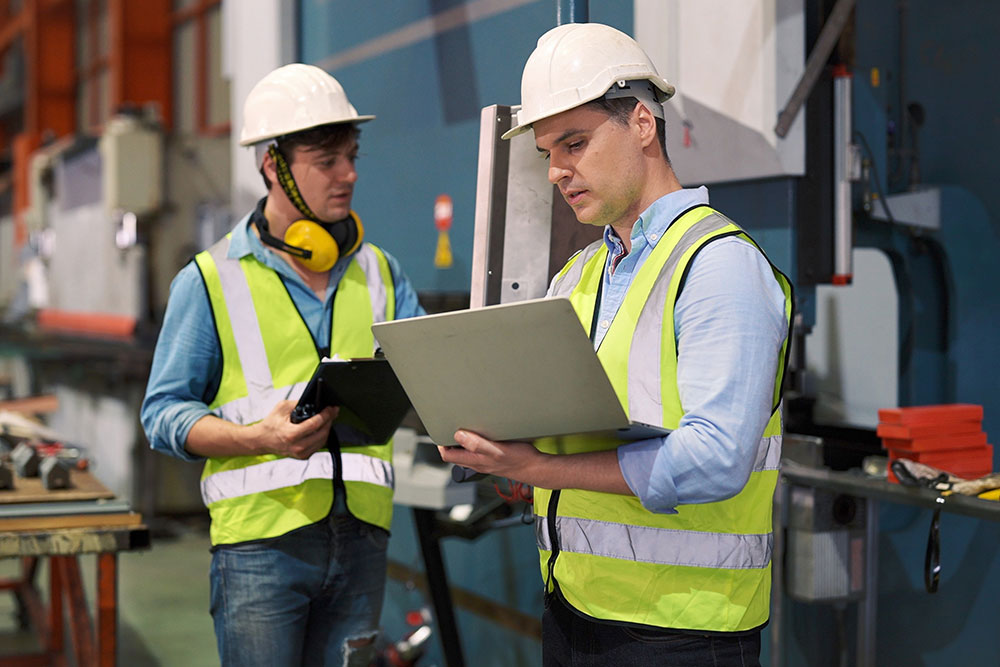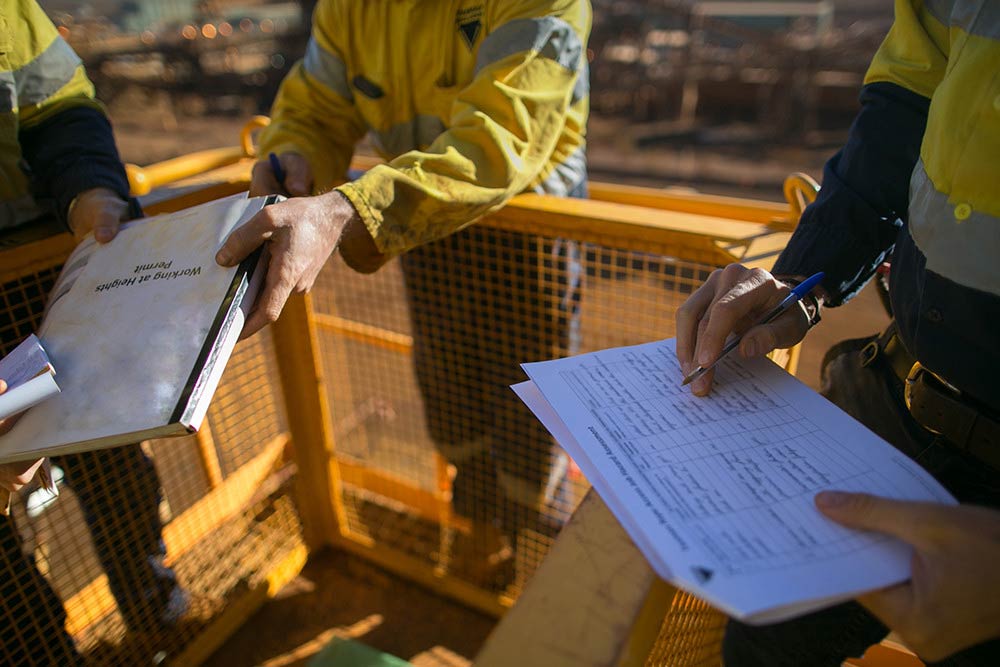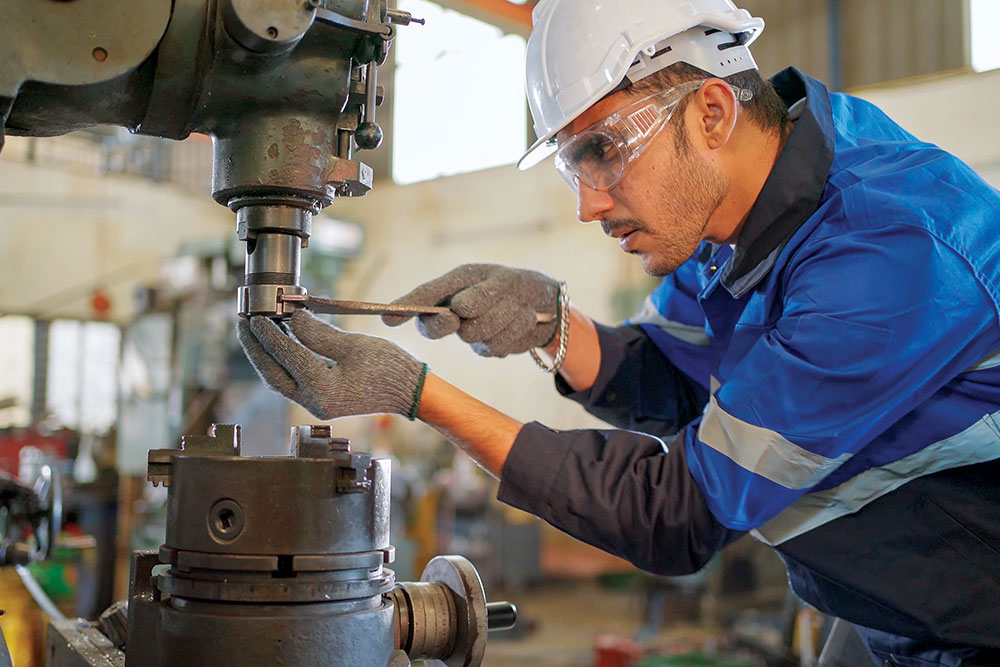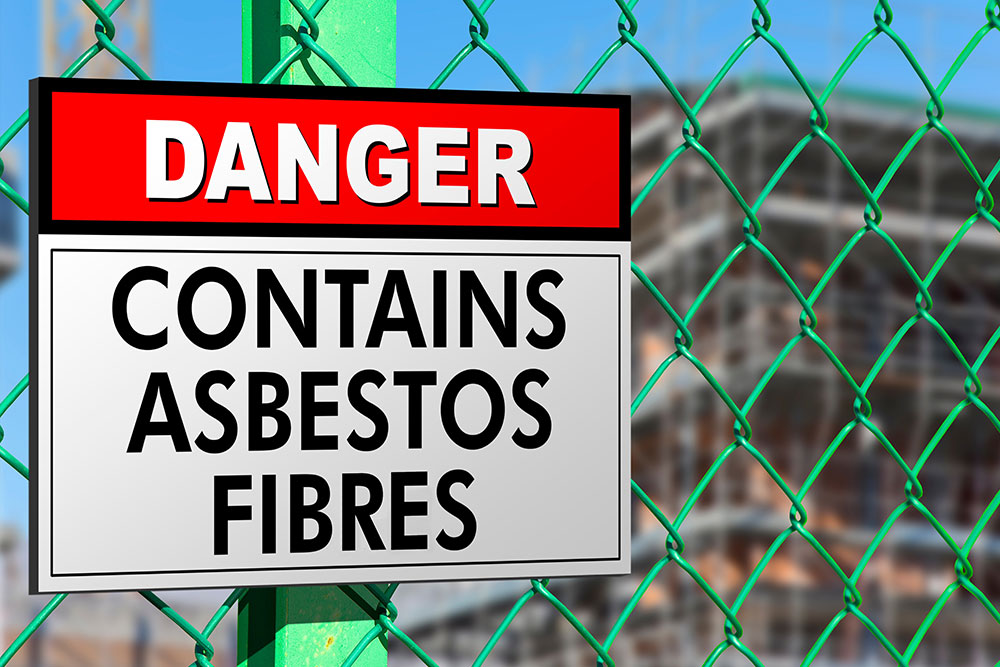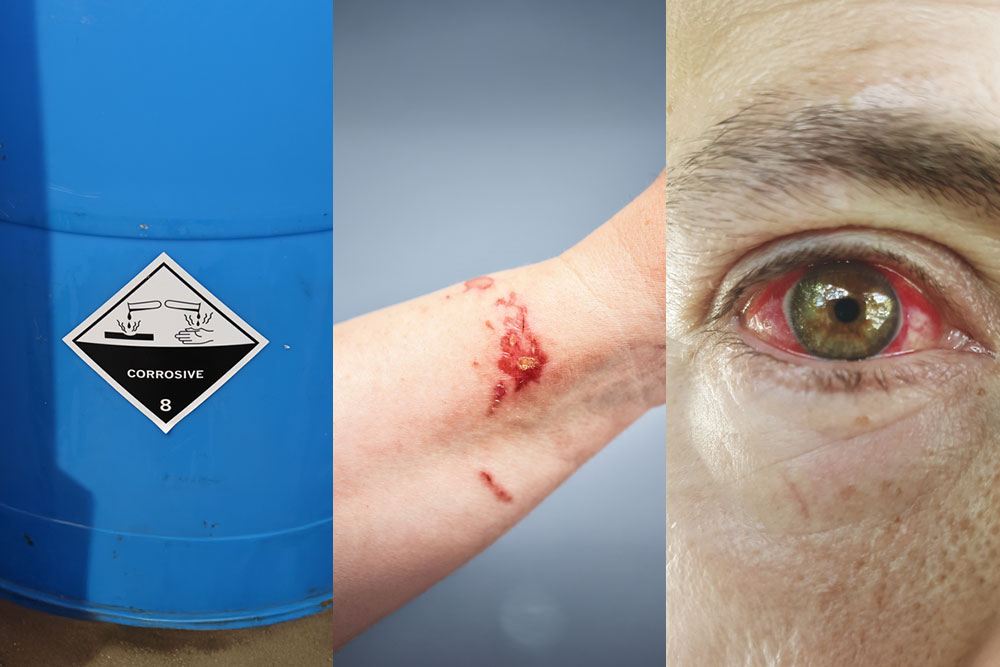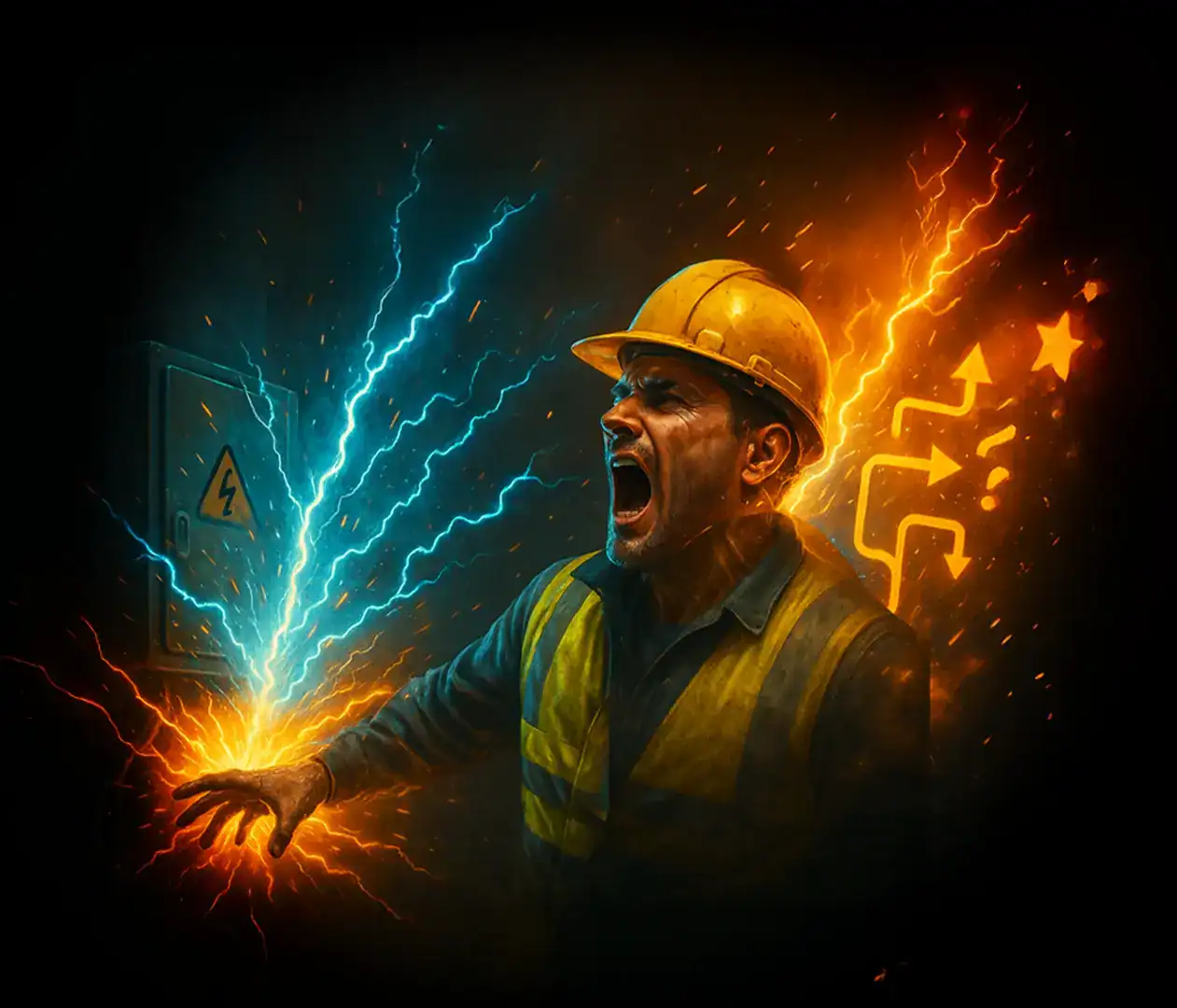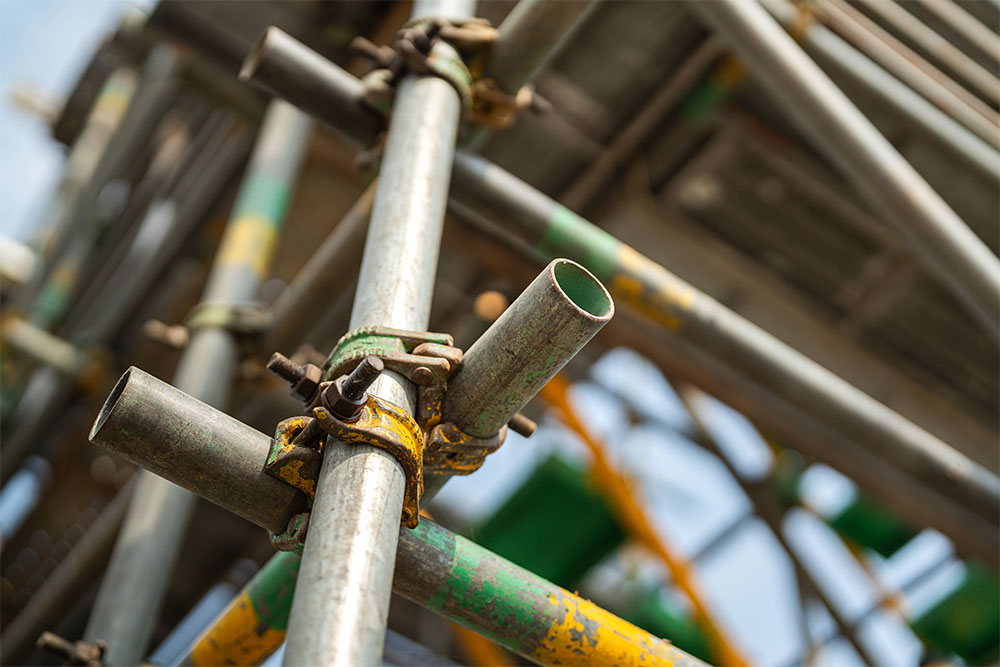
Scaffolding is used in almost every construction project. And even if you’re not the one putting it up, it’s helpful to know the different scaffolding parts. From base plates at the bottom to guard rails at the top, each piece helps keep the structure stable and safe.
This guide covers standard scaffolding parts and how they fit together. Whether you’re new to construction or want a refresher, this guide will help you understand scaffolding and how it keeps you safe on the job.
Key Takeaways
- Scaffolding parts work together to create safe and stable platforms for working at height.
- Supported and suspended scaffolds are the two main types, with different subtypes of each for more specialised work.
- Core scaffolding parts, like standards and ledgers, provide the structure, while safety parts, like guard rails, prevent falls.
Scaffolding in Construction
Scaffolding describes different types of temporary raised platforms built using poles and frames. In construction, scaffolding creates a safe platform for work at height.
The Work at Height Regulations 2005 actually rank scaffolding as one of the better control measures to prevent accidents. (Almost half of all fatal accidents in construction are falls from height.)
There are two main types of scaffolds used in construction: supported and suspended.
Supported Scaffolds
Supported scaffolds are built using poles and frames. They can be free-standing or erected around an existing structure. The standard “tower” version is most often used.
Static Scaffold Towers
Static scaffold towers are free-standing structures that provide a stable platform for working at height. Because they’re fixed in place, they’re usually used for longer projects.
For residential work, a static tower might be 6m tall, around the same height as an average house. For commercial work, there’s technically no limit. But the higher you go, the greater the risks. Only the most experienced and competent contractors can be trusted to erect towers taller than 8m.
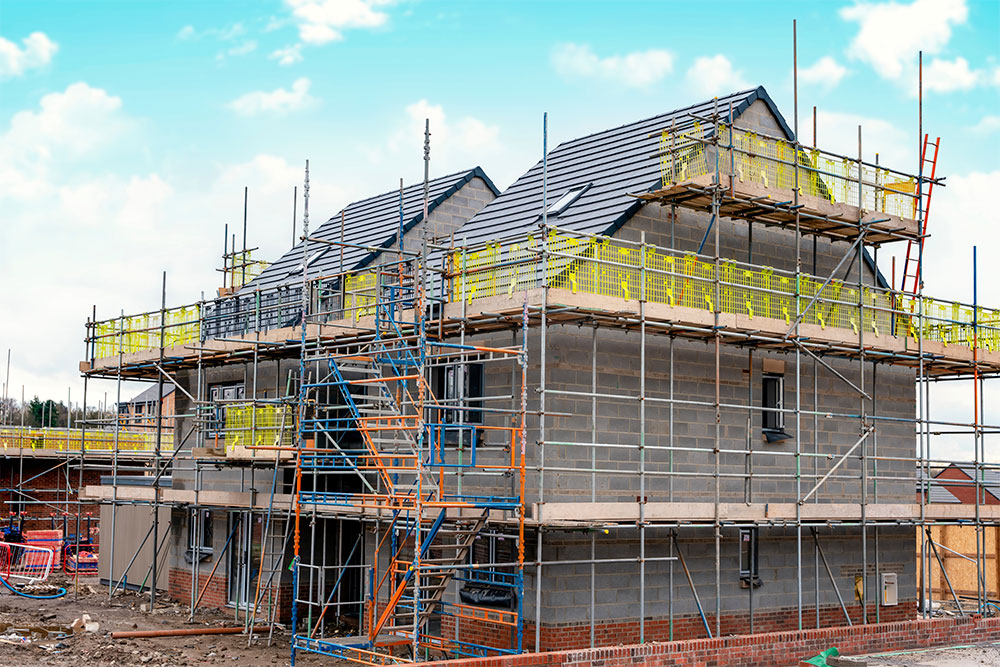
Mobile Scaffold Towers
Scaffold towers can also be mobile. Mobile versions have wheels or casters at the base so they can be moved between tasks. They’re mainly used for decorating and painting.
Because these platforms are mobile, they’re not as stable as static versions. You can’t build them as high or work from them for as long as a scaffold tower that’s fixed in place.
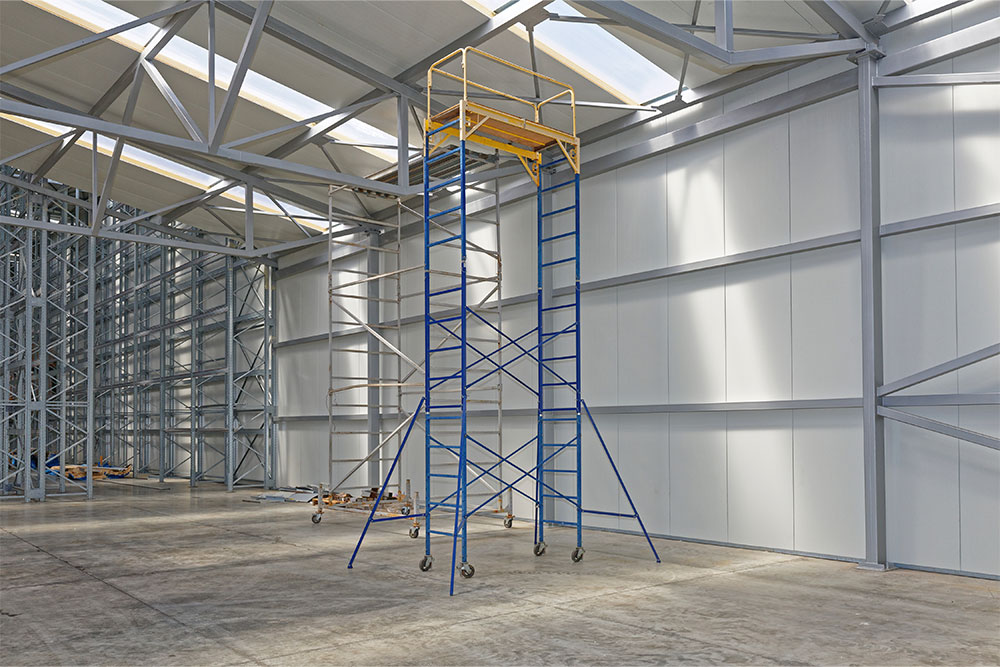
Bird Cage
Bird cages are static towers built wide, not high. They provide a large working platform for tasks where you need a lot of space to move around, such as painting a large interior ceiling.
Suspended Scaffolds
Suspended scaffolds hang under an existing structure. They’re more specialist and are mostly used for maintenance or renovation work.
There are two subtypes: dropper and hanger.
Dropper Scaffold
A dropper scaffold extends horizontally from a support structure. The platform is only supported on one end, so workers can access hard-to-reach spots without needing extra support from below.
Hanger Scaffold
As the name suggests, hanger scaffolds hang under an overhead structure. They’re used when workers need access to the underside of a building or infrastructure, such as bridges.
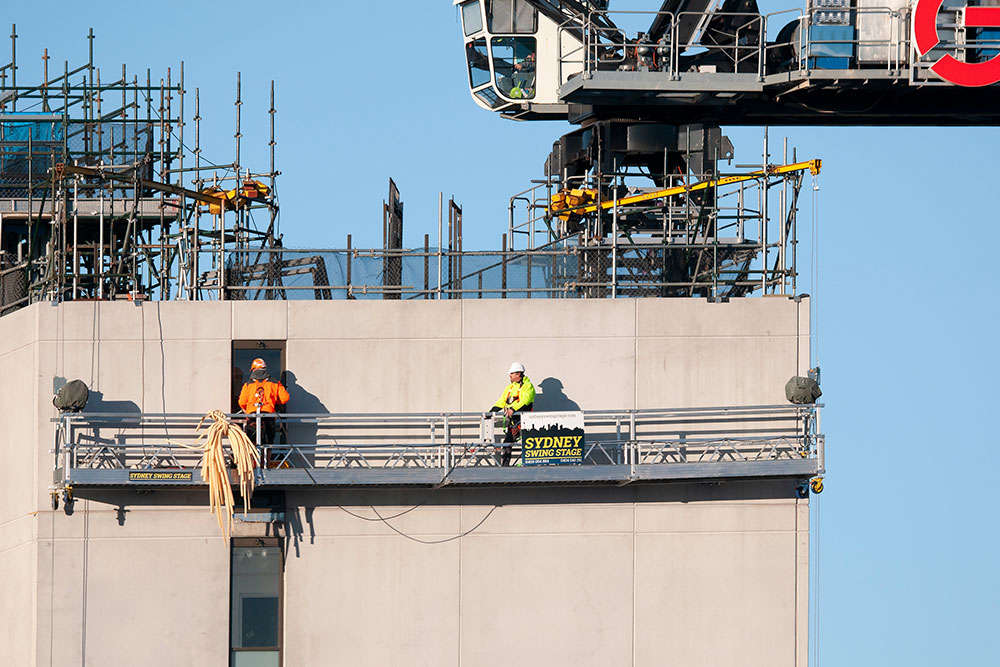
Scaffolding Parts
Here, we’ve described the standard parts you’ll find in most static scaffold towers.
Scaffolding Parts: Basic Structure
This section covers the core weight-bearing components. They create the framework that supports the platform and workers.
The different parts are described in the order you’ll find them, starting from the ground.
Sole Boards
Sole boards are placed under the base to spread the load and keep the structure stable. They provide a solid foundation to prevent the structure from sinking into soft ground. Most sole boards are made from wood, although plastic or composite versions exist.
Base Plates
Base plates sit on top of the sole boards and connect to the vertical poles. They help distribute weight evenly and provide a stable, level start for the scaffold structure.
Standards
Standards are the vertical poles of the scaffold. They carry the weight of the entire structure, transferring the load down to the base plates and sole boards on the ground.
Ledgers
Ledgers are horizontal poles that connect the standards, creating the main framework of the scaffold. They add support and help keep the standards aligned.
Transoms
Transoms are shorter horizontal poles placed at right angles to the ledgers. They support the scaffolding boards, making the platform stable and secure.
Ledger Braces
Ledger braces are diagonal poles that connect standards and ledgers. They prevent sideways movement to ensure the structure remains rigid.
Facade Braces
Facade braces are placed on the outside of the scaffold and run diagonally. They help to stabilise the structure against wind and other lateral forces.
Putlogs
Putlogs are horizontal supports between an existing building or structure and the scaffold for added stability.
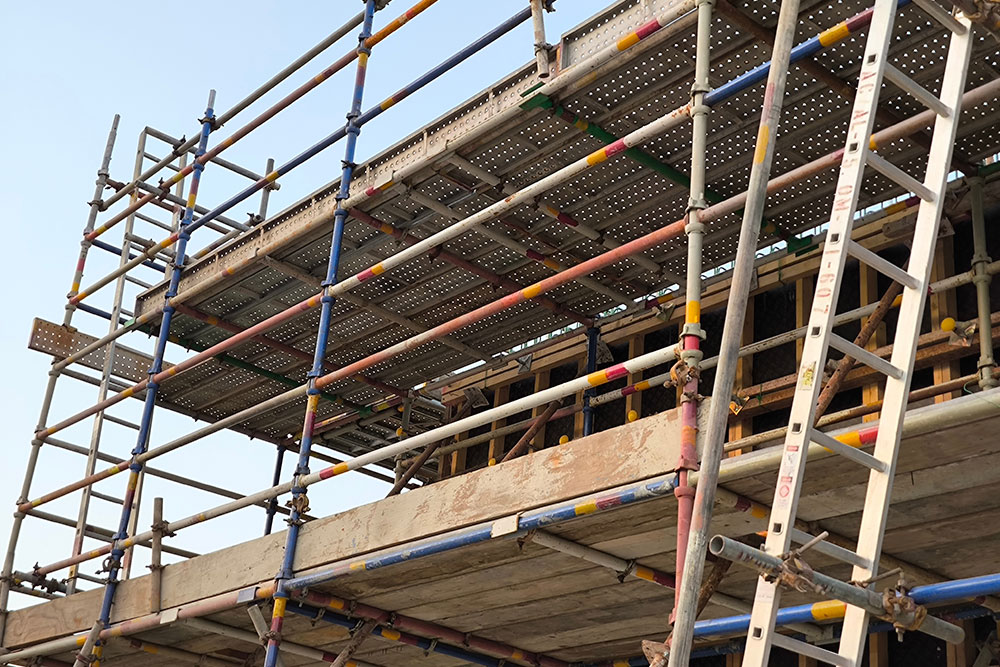
Scaffolding Parts: Couplers
Couplers are the connectors that hold different parts together. They’re crucial for keeping the structure solid and stable.
Right Angle Couplers
Right-angle couplers connect poles at 90-degree angles. They provide a secure link between standards and ledgers, forming the scaffold’s basic grid structure.
Swivel Couplers
Swivel couplers connect poles at any angle for more flexibility in scaffold design. They’re most often used for diagonal bracing.
Putlog Couplers
Putlog couplers are used to attach putlogs to ledgers or standards for extra stability.
External Couplers
External couplers are used to join two poles together. An external coupler goes around the two poles like a sleeve, which is why these parts can also be called sleeve couplers.
Internal Couplers
Internal couplers fit into the ends of two poles, joining them together.
Scaffolding Parts: Safety and Access
Safety and access parts are vital for preventing falls and ensuring workers can move securely around the structure.
Scaffolding Boards
These strong, durable boards provide a stable platform to walk on and work from.
Toe Boards
Toe boards are short barriers along the edge of the platform. They prevent tools and materials from falling off and injuring anyone below.
Intermediate Rails
Intermediate rails are horizontal bars positioned between the toe boards and guard rails. They add extra protection, making it harder for workers to slip through gaps.
Guard Rails
Guard rails are installed at waist height along the edges of the platform. They act as a safety barrier to prevent falls.
Brick Guard
Brick guards are mesh barriers fitted to the guard rails. They prevent bricks or other loose materials from falling off the platform and hurting anyone.
Access Ladder
Access ladders provide a safe way for workers to climb up and down the scaffold. They’re usually secured to the structure to ensure stability and prevent slipping.
Access Gate
Access gates are entry points installed on the scaffold platform. They help control access and should automatically close to prevent accidental falls.
Safety Tips
Following basic safety practices on scaffolding can make a huge difference in preventing accidents.
Learn Scaffolding Parts and What They Do
Every component plays a role in the scaffold’s safety and stability. If you know what each part is and what it does, you can spot when one’s missing or not fitted correctly. If something doesn’t seem right, stop and seek out a competent supervisor.
Use Any PPE You’re Given
Personal protective equipment (PPE) like helmets, harnesses and non-slip footwear is there to protect you. Make sure you wear it properly every time you’re working at height.
Check your PPE before each use, and ask for replacements if any equipment shows signs of damage.
Report Any Concerns or Incidents to Your Supervisor
If you spot any issue with the scaffold or experience an incident, always report it immediately to your supervisor. Even minor concerns, like missing toe boards, should be flagged so they can be fixed right away. Quick reporting helps address hazards before they lead to accidents.
Scaffolding Safety Training
Understanding scaffolding parts is essential, but there’s more to learn before scaling any access ladder. Our online Scaffold Awareness Training course offers a closer look at each component and how they all fit together. It also covers the safety practices every construction worker must know. This course is ideal for anyone looking to build confidence and stay safe on the job site.


